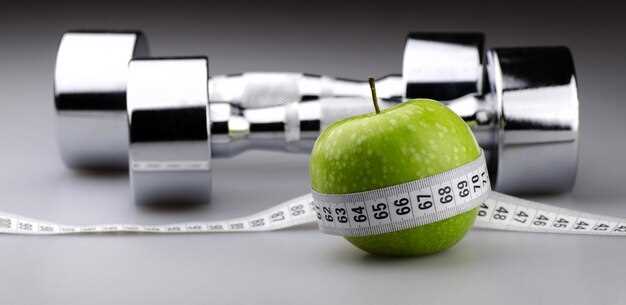
In the world of automotive performance, the quest for speed and efficiency often leads builders and enthusiasts to the fundamental principle of weight reduction. Reducing the overall weight of a vehicle is a crucial factor that can significantly enhance its performance, especially in racing scenarios. Lighter vehicles not only accelerate faster but also handle better, providing a competitive edge on the track.
Weight reduction plays a vital role in improving the power-to-weight ratio, which directly affects a vehicle’s acceleration and braking capabilities. When a car sheds excess pounds, it requires less energy to move, allowing the engine to perform more effectively. This is particularly important in racing, where every fraction of a second counts. Builders must explore various methods, such as utilizing lightweight materials and optimizing design, to achieve substantial reductions in weight while maintaining structural integrity and safety.
Moreover, the benefits of weight reduction extend beyond mere speed. A lighter vehicle can experience improved fuel efficiency, which is an essential consideration for competitive racing teams. By balancing performance and efficiency, racers can gain a strategic advantage throughout longer events, where fuel consumption becomes a critical factor in the overall outcome. Ultimately, the importance of weight reduction in performance builds cannot be overstated; it is a key component that defines the effectiveness and success of any racing vehicle.
Impact of Weight on Acceleration Times
The relationship between weight and acceleration times is crucial in performance vehicles. A vehicle’s weight directly affects its ability to accelerate efficiently. When weight is reduced, less force is required to achieve the same acceleration, leading to improved performance.
For every pound eliminated from a vehicle, significant gains in acceleration can be observed. This is because acceleration is fundamentally about the force-to-weight ratio; a lighter vehicle can accelerate faster with the same power output. In competitive settings, even minuscule reductions in weight can result in improved quarter-mile times and overall speed.
Furthermore, weight reduction also enhances vehicle handling and stability. A lighter car tends to have better traction, allowing for quicker responses during acceleration. This not only improves straight-line performance but also enables more aggressive cornering, which is essential for track-focused builds.
Additionally, the impact of weight on acceleration is not limited to mere numbers on a scale. It also influences the dynamics of the engine and transmission. A lighter vehicle typically experiences less strain on these components, which can extend their longevity and enhance reliability during high-performance usage.
In conclusion, the reduction of weight is a fundamental aspect that significantly affects acceleration times. Performance builds that prioritize weight reduction are likely to achieve superior acceleration and overall driving experiences, affirming the critical role of weight in automotive performance.
Weight Distribution and Handling Characteristics
In the realm of performance builds, weight reduction plays a pivotal role in enhancing not only speed but also the overall dynamics of a vehicle. One critical aspect influenced by weight reduction is weight distribution, which is the way weight is spread across a vehicle’s axles. An optimal weight distribution is essential for achieving superior handling characteristics, especially in racing scenarios.
When weight is evenly distributed, a car can maintain traction and stability during high-speed maneuvers. This equilibrium reduces the likelihood of oversteer or understeer, allowing drivers to navigate corners with confidence. By strategically reducing weight, especially from less critical areas, builders can achieve a fine-tuned balance that enhances cornering capabilities and responsiveness.
Moreover, adjusting weight distribution can influence the vehicle’s center of gravity (CG). A lower CG typically leads to improved handling, as it diminishes body roll during turns. Thus, implementing weight reduction strategies, such as using lighter materials or removing unnecessary components, can result in a more agile and responsive racing machine.
In essence, focusing on weight reduction not only aids in achieving a faster lap time but also refines the handling characteristics, making the vehicle more predictable and easier to control at high speeds. The combination of an optimal weight distribution and a well-planned reduction strategy is vital for maximizing performance in any racing environment.
Material Choices for Effective Weight Savings

In the world of racing, every gram counts. Lightweight materials can significantly enhance a vehicle’s performance by improving acceleration, handling, and fuel efficiency. Here are some optimal material options that contribute to effective weight reduction while maintaining structural integrity:
- Carbon Fiber:
This composite material is renowned for its incredible strength-to-weight ratio. Often used in high-end racing applications, carbon fiber parts like body panels and chassis components provide substantial weight savings compared to traditional metals.
- Aluminum:
Aluminum is a popular choice for racing due to its lightweight nature and good corrosion resistance. Engine components, suspension parts, and wheels made from aluminum can significantly reduce overall weight without compromising durability.
- Magnesium:
Magnesium offers an even lower weight option than aluminum. It is often used in wheel construction and engine parts, delivering outstanding performance. However, special care is needed to handle magnesium safely due to its flammability.
- Titanium:
While more expensive, titanium provides excellent strength and lightweight properties. It’s frequently used in exhaust systems and fasteners for racing applications, ensuring weight reduction without sacrificing strength.
- High-Strength Steel:
Advanced high-strength steel variants can be designed to reduce weight while maintaining rigidity. These steels are used in critical areas of the vehicle to ensure that safety standards are met alongside performance gains.
When selecting materials for racing builds, it’s crucial to balance weight reduction with performance and safety. Opting for these advanced materials can lead to competitive advantages on the track, pushing the limits of modern racing technology.
Real-World Examples of Successful Weight Reduction
In the competitive world of racing, weight reduction is a critical factor that can greatly influence performance. Many successful racing teams have adopted innovative strategies to cut down weight without compromising structural integrity or safety. One notable example is the use of carbon fiber components in high-performance vehicles. Teams like Ferrari and McLaren have invested heavily in carbon fiber technology, allowing them to fabricate lightweight body panels and chassis parts. This reduction in weight directly translates to improved acceleration and handling on the track.
Another example can be seen in the world of endurance racing, where the Audi R18 e-tron quattro exemplified successful weight reduction. Audi engineers focused on optimizing every component, from the hybrid powertrain to the suspension system. By implementing advanced materials and design techniques, they achieved significant weight savings which enhanced fuel efficiency and lap times during competition.
Furthermore, grassroots motorsports have also embraced weight reduction methods. Many amateur racers utilize rules allowing for weight modifications through the removal of non-essential components. This practice has led to dramatic improvements in vehicle dynamics, allowing increased speed and better maneuverability in events such as autocross and drifting.
In Formula 1, where every gram counts, teams continually refine their designs. The Mercedes-AMG Petronas Formula One Team has developed innovative lightweight designs that include magnesium alloys and advanced composite materials. These reductions have not only improved performance but have also set benchmarks for the entire automotive industry.
Success stories like these illustrate the substantial benefits of weight reduction strategies in racing. By prioritizing lightweight construction and design, teams can achieve enhanced performance, ultimately leading to a competitive edge on the track.
Balancing Weight Reduction and Vehicle Safety

In the realm of performance builds, especially in racing, achieving optimal weight reduction is crucial for enhancing acceleration, handling, and overall speed. However, the pursuit of a lighter vehicle must be carefully balanced with safety considerations. Reducing weight too aggressively can compromise the structural integrity of a vehicle, leading to increased risks in high-speed scenarios.
The challenge lies in identifying areas where weight can be reduced without compromising critical safety features. This often involves a strategic analysis of various components and materials used in the vehicle’s construction. Below is a summary of key factors to consider when balancing weight reduction with safety:
| Component | Weight Reduction Strategy | Safety Consideration |
|---|---|---|
| Chassis | Utilize lightweight materials such as aluminum or carbon fiber. | Ensure that structural rigidity and crash protection are maintained. |
| Suspension | Replace stock components with performance-oriented, lighter alternatives. | Confirm that handling dynamics and safety during high-speed maneuvers are not compromised. |
| Interior | Remove unnecessary features and utilize minimalist racing seats. | Maintain essential safety gear such as roll cages and harnesses. |
| Wheels | Switch to lighter alloys or carbon fiber wheels. | Ensure that the reduced weight does not affect braking performance and stability. |
By carefully evaluating each component’s contribution to both weight and safety, builders can create a performance vehicle that excels in racing without sacrificing essential safety features. Striking this balance is vital for not only achieving peak performance but also ensuring the well-being of drivers and passengers on the track.
Strategies for Weight Reduction in Racing Applications
Weight reduction is critical in racing applications as it directly impacts speed, handling, and overall performance. Implementing effective strategies can lead to significant improvements on the track. Below are several approaches to achieve weight reduction in racing vehicles.
One of the most effective methods is the use of lightweight materials. Replacing traditional steel components with alternatives such as carbon fiber, aluminum, or titanium can drastically lower the overall weight. These materials maintain strength and durability while offering considerable savings in weight.
Another strategy involves the elimination of unnecessary components. Assessing the vehicle’s systems and removing non-essential parts, such as sound dampening materials or redundant safety features, can lead to substantial weight loss. Every gram counts in racing, and careful evaluation can reveal opportunities for reduction.
Optimizing the design of existing parts can also contribute to weight reduction. Utilizing computer-aided design (CAD) tools, engineers can identify areas where material can be removed without compromising structural integrity. This process, known as lightweight engineering, can yield components that are both lighter and more efficient.
Weight distribution is another crucial aspect to consider. By strategically placing lighter components in critical areas, such as the chassis or suspension, racers can optimize balance and handling, enhancing overall performance on the track.
Lastly, regular maintenance and tuning can prevent excess weight gain from dirt and debris accumulation. Keeping the vehicle clean and ensuring that all systems are functioning optimally will help maintain the desired weight and performance levels.
